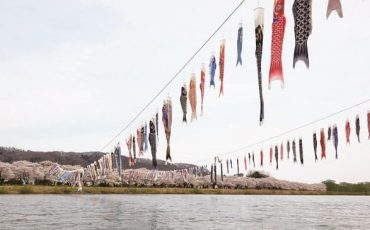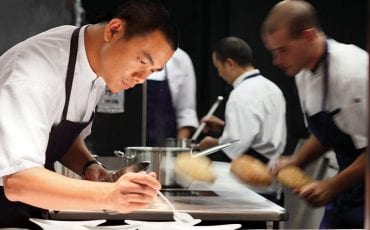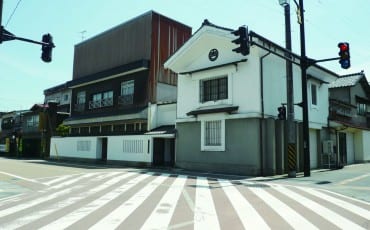- OISHII
- Articles
- Chefs Interview
- The History of Japanese Baking
Articles
Chefs Interview
Oct 1, 2014
The History of Japanese Baking
When it comes to baking, the Japanese do give the Westerners a run for their money. Think delicate cakes, crusty breads and pillowy soft buns made with equal doses of love and precision.
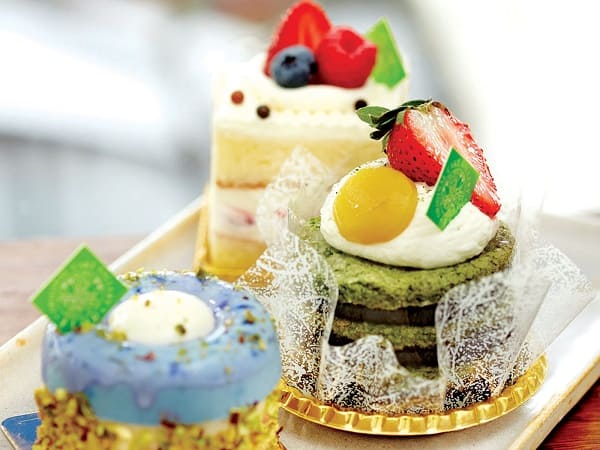
“Wayo-Setchu” is the fusion of elements from both Japanese and Western cuisines. The breads and cakes that are created by Japanese patisserie chefs are a form of Wayo-Setchu because while they bear the form and techniques of Western breads and pastries, many of them have also adopted distinctively Japanese characteristics such as the incorporating of red bean as an ingredient.
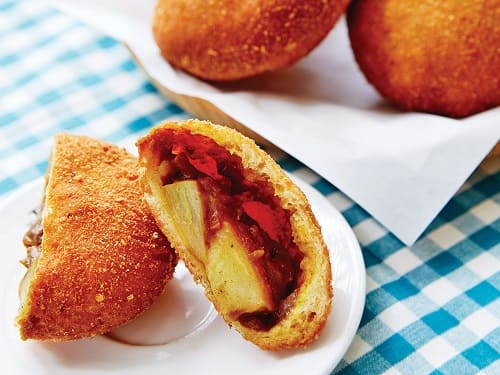
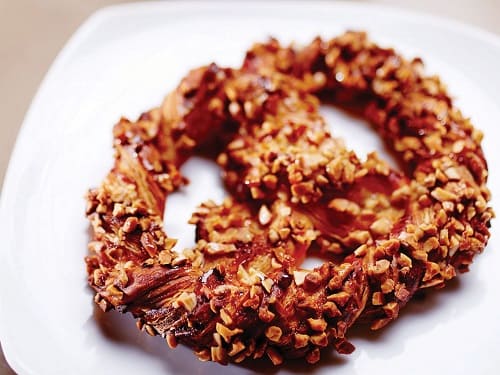
The first books on bread-making in Japan were published shortly after the Russo-Japanese War in 1906. The first book was produced by a Western-style restaurant in Tokyo, the second, titled “Instructions of the Master of Kimuraya”, was produced by the third-generation owner of a bakery that was established in Tokyo in 1869.
The Creation of The “Pan”
At that time, Kimuraya was not actually known for Western-style breads. Its fame came from its invention of the anpan, a soft bread made of sakadane (rice-cultured yeast traditionally used in sake fermentation), filled with azuki-an, a paste made from boiling red beans with sugar. The overwhelming popularity of the anpan set in motion the tradition of wayo setchu and the invention of yet more fusion sweets.
Dream Combinations
As with the azuki (red bean), green tea soon became another popular flavour for Japanese-Western fusion sweets, making its appearance in desserts such as green tea cakes and green tea chocolates. The flavour proved to be so well accepted by non-Japanese palates, it is today widely used in desserts like macarons and ice creams by Western brands.
Japanese-Western fusion breads and desserts are especially popular among Singaporeans who are regularly exposed to international cuisines. Read on in the following pages as we interview three chefs who each represent a different aspect of the Wayo-Setchu culture in baking.
Chefs of Japanese Bakeries in Singapore Interview
Itaru Tachihara Bakery Chef of Pullman Bakery
Established in Hokkaido in 1978, Pullman Bakery was formerly known as Tachihara Bakery. It was renamed Pullman Bakery when the family moved to Sapporo from Enbetsu-cho, Northern Hokkaido in 1986. The bakery is best known for its curry bun. The Singapore store is Pullman Bakery’s only overseas store and is managed by Itaru Tachihara, son of chairman Kazuomi Tachihara.
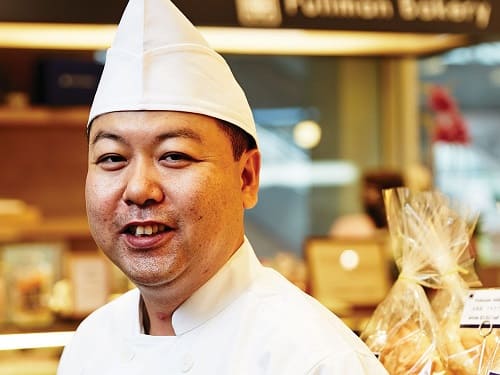
How are the breads and pastries from Hokkaido different from those from other regions in Japan?
Hokkaido is known for its rich and fresh farm produce. There, we are able to obtain the best wheat and milk. Perhaps this is why Hokkaido breads taste so good. Pullman Bakery has always insisted on using the freshest possible ingredients. This is also part of my frustrations in Singapore because we will never be able to get the ingredients to us super fresh.
However, I have done a lot of research and experiment to get the flavours and quality as close to what you can find in our stores in Japan. For example, the curry bun. Even though we use Japanese wheat, the potatoes are sourced locally to ensure they are fresh.
What inspired the curry bread and what makes it so good?
Actually, the curry bun already existed in Japan. But we improved on the recipe by adding potato chunks into our curry paste and giving it a more robust flavour.
Are Japanese bakers trained any differently from, say, the French?
Japan has a very unique bread culture that saw the creation of soft buns like the anpan, the melon pan and the curry bun. However, we are also trained to make European breads like the French baguette. While my father was a self-taught baker, I trained for a year and a half with a French chef when I was 18. The opportunity to learn something different was most definitely very helpful for my career.
What is the most important quality a baker must possess in order to be a good one?
You must have heart. If you don’t have the passion or the love for bread making, this is not an easy business to get into. You have to start early every morning to get your breads ready for your customers and you have to be prepared to work hard.
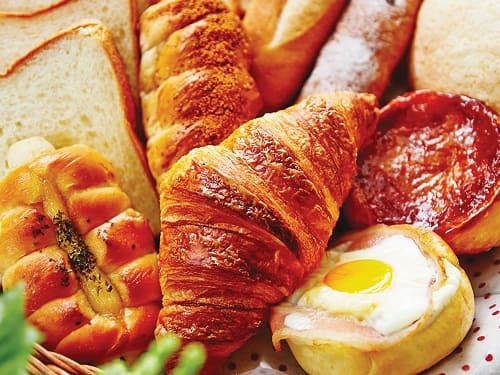
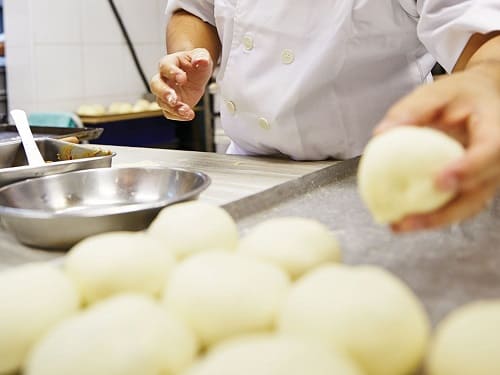
Pullman Bakery
9 Raffles Boulevard,
#01-97/98, Millenia Walk
Shuichiro Kimura, CEO, Boulangerie Eric Kayser Japon Inc.
The Maison Kayser stores you see in Singapore are opened by Chef Shuichiro Kimura, who brought the famed Parisian boulangerie to Tokyo after training under Eric Kayser, Head Executive Chef and President. Chef Kimura’s family owns the famed Kimuraya (read p32). Determined to bring something new to the baking scene in Japan, he opted to strike out on his own with Eric Kayser rather than take on his family business. He tells us more below.
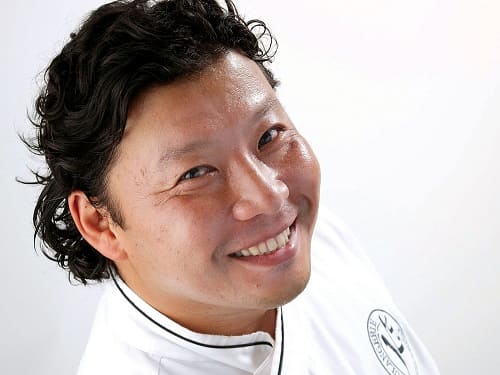
Your family was known for the creation of the anpan. Have you thought of introducing it to Europe?
I don’t think I will. First of all, there is a difference in the way bread is consumed in Europe and in Japan. In Japan, we combine incorporate sweet flavours into our bread to the point that it’s almost like a dessert. In Europe, however, bread is used as a “spoon” to eat with your soup or mop up gravy. Bread is also used as a palate cleanser in between courses. Therefore, Europeans prefer their breads to be plain and crusty. They may not take so well to the anpan, which is soft and sweet.
What is Maison Kayser famous for?
In most breads, commercial yeast is used as the leavening agent. But at Maison Kayser, we don’t use yeast. We use a natural liquid leaven. Our focus on natural fermentation means that our breads develop a complex flavour. Maison Kayser’s croissants are also very well-loved. In fact, Figaro named it the best in Paris! It is still our best-seller today.
How did you come to join Maison Kayser?
Prior to 1997, I was actually working in life insurance. Then I decided to become a baker and I went to the US to study as a baker. After working a while in New York, I went to Paris and became Mr Kayser’s trainee. In 2000, Mr Kayser asked if I would like to be his partner in Japan by bringing Maison Kayser to the country.
What does it take to make a good loaf of bread?
The simple breads are the most difficult to make because you can tell if the taste and quality is up to scratch. You have to pay attention at every step – watch the temperature in the room, the humidity and adjust your method to make sure you get the maximum flavour out of the flour and that the bacteria in the leaven is at its most energetic.
Have you tried any flavour combination that didn’t work?
I was once invited by a famous French restaurant in France to make a special bread with seaweed. When they include seaweed into a dish, the Europeans tend to use fresh seaweed. And so, I tried making a bread with fresh seaweed. The result wasn’t so good. However, I tried again using the dried seaweed that Japanese are more familiar with and the new result was much better.
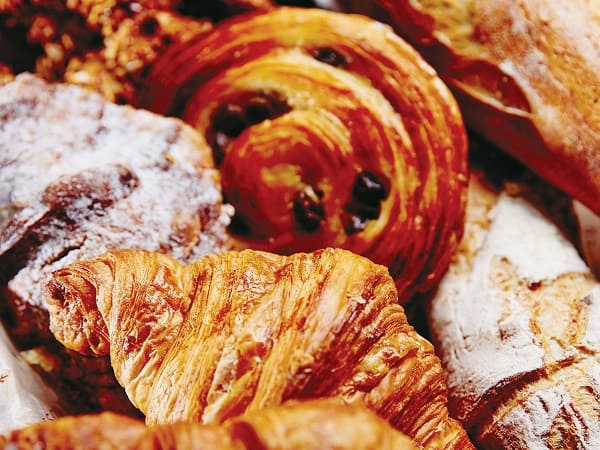
Maison Kayser
6 Scotts Road, #B1-09, Scotts Square
www.maison-kayser.com/en
Heidi Tan Executive Chef of FLOR Patisserie
Chef Heidi may be just 25 but she has been in the industry for six years, four of those in FLOR. She trained under Chef Masataka Yamashita, who helped set up FLOR Patisserie in 2010. Chef Heidi now runs FLOR by herself.
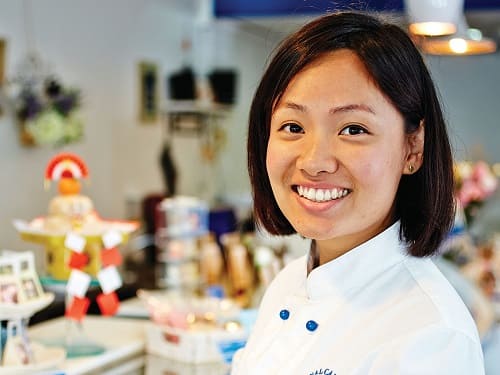
What are the differences between a Western cake and a Japanese cake?
If we go down to the very base of Western cakes and Japanese cakes, both are French in origin. Like Western cakes, Japanese cakes also uses genoise sponge, dacquoise, mille feuille etc. After all, Japanese patissiers were the first to travel to France to learn the art of patisserie. However, when Japanese patissiers brought the art and skill they learned back to Japan, they melded it with their own culture, thus creating Japanese cakes. Japanese cakes generally, are a lot lighter and less sweet. Also, they tend to feature more fresh fruit in their designs to cater to the lighter palates of the Japanese. Not forgetting Japanese-inspired flavours like black sesame, red bean, yuzu etc.
How do you go about planning or designing your cakes?
There is no one way to go about planning each creation. But usually, I start with the primary flavour or ingredient I want to feature. For example, the butterfly pea flower used in my Blue Donut creation. Then I would decide on the best medium to carry this particular flavour (mousse, sponge or cream). In this case, I chose mousse as a medium to carry the butterfly pea flower to give emphasis to its beautiful blue colour. But of course this decision sometimes will change to suit a style of presentation I want. For example, I have originally intended Murasaki-hime (the purple sweet potato cake) as a shortcake but decided against because the shortcake style of presentation is not able to showcase fully the lovely purple of the sweet potato cream. In the end, I had the cream piped into rosettes on top of a Swiss roll of sponge.
What was training under Chef Yamashita like?
Training with Chef Yamashita was a privilege. It was hard at first, because he is Japanese (hence, the language barrier) and very strict. There is also the practice that the chef has absolute authority in a sense that if he follows a particular method of doing something, everyone has to do the same. I didn’t like this style of working at first because I was the type to challenge conventions. But I accepted it as part of my training after I realised these are important lessons in discipline that is crucial to any working team. For that, I thank him.
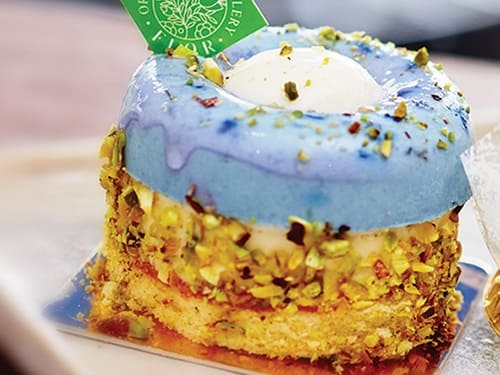
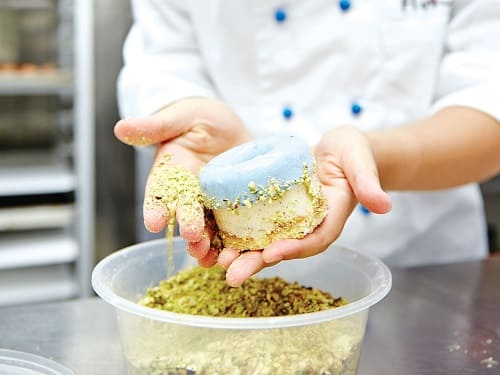
Flor Patisserie
42 Siglap Drive
www.cakeflor.com.sg
TEXT:DEBORAH TAN
PHOTOGRAPHY:RAYMOND TOH/VINEYARD PRODUCTION





